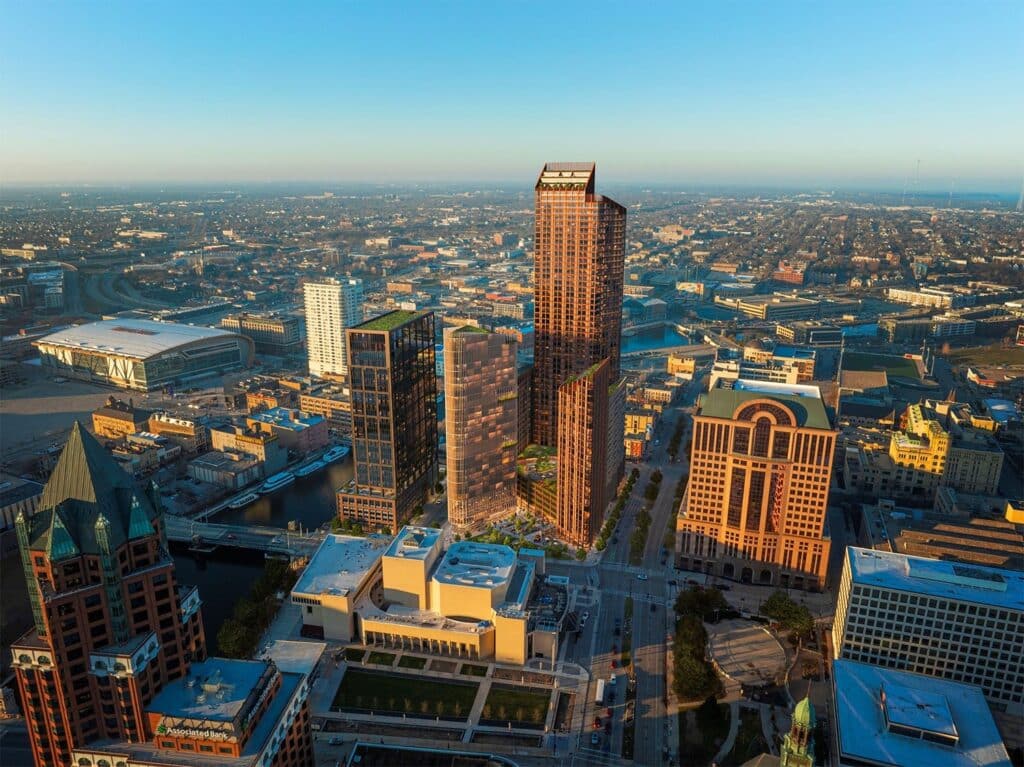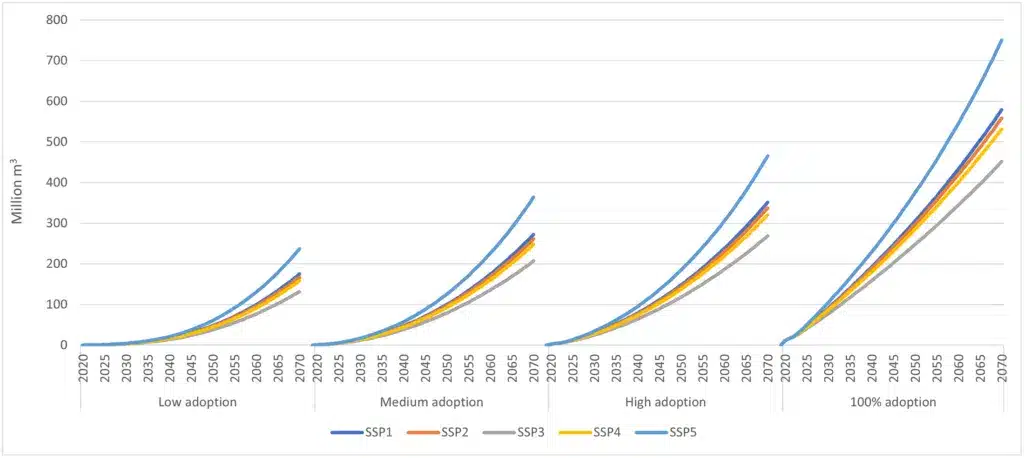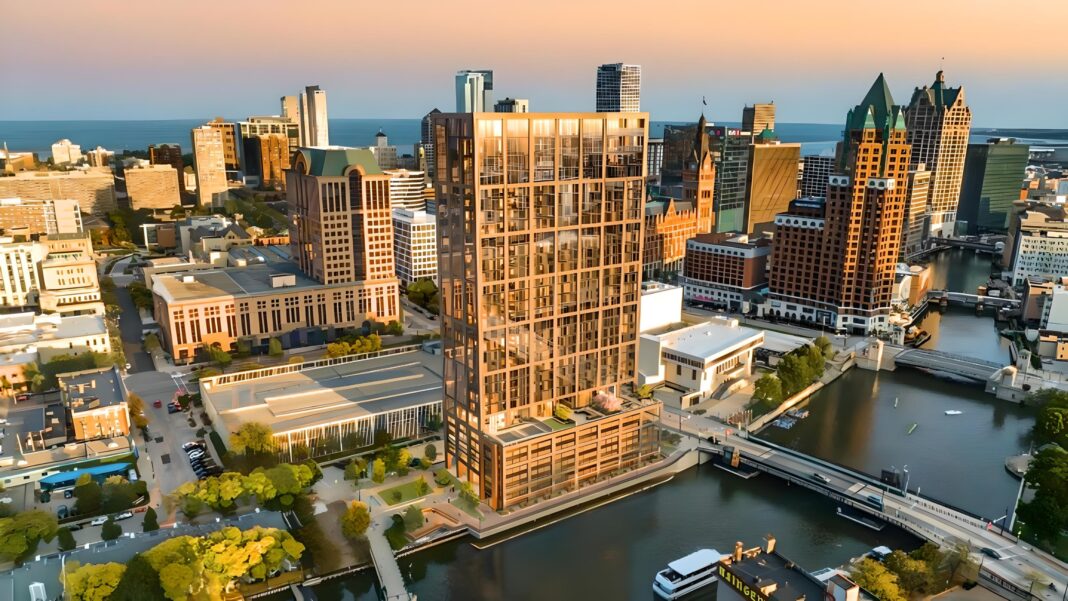North America’s largest mass timber project will rise to 31 stories (instead of 32), lose five apartments (but have a much larger penthouse), and be built much faster than originally planned after developers “found a more efficient parking layout” that kept the same number of spaces while reducing the height of the parking structure within the building.
That is according to Daniel Glassl, the Chief Product Officer for the Madison-based Neutral, who said the developer finally expects to begin site preparation in the first quarter of 2025, with full construction on the tower to start in the second quarter.

Known as The Edison, the 31-storey skyscraper would be Milwaukee’s newest luxury apartment tower and second built with mass timber construction. Its height would surpass the 25-story Ascent tower co-developed by Milwaukee’s New Land Enterprises, which put the city on the global map when it was certified in 2022 as the tallest mass timber structure in the world.
Designed by Chicago-based Hartshorne Plunkard Architecture, it is expected to use more than 100,000 cubic feet of cross-laminated timber panels, and glulam beams over a post-tensioned concrete base. It is a short hop, skip, and jump from a 50-storey timber tower (slated to be the tallest in the world) also being developed by The Neutral Project.

Why Milwaukee? North America’s new hub for timber skyscrapers
In August, Michael Green – the architect behind the 50-storey mass timber building – said that Milkwaukee was part of a growing sweep of “secondary cities” leading the way in sustainable development.
According to Mr Green, city officials are completely “on board” with sustainable-centric design – before adding that smaller cities, like Milwaukee, have a unique opportunity to create sustainable models for larger urban centres to follow – with larger cities, like Chicago, less willing to experiment with materials.
“It is ambitious projects like THESE that show how smaller cities are now poised to surpass the once-dominant capitals that shaped our skylines a century ago. Milwaukee’s progressive leaders are embracing a future-oriented vision, encouraging development and innovation. Secondary cities across America are proving what’s possible. It’s time we all listen.”
Michael Green talking about the 50-storey timber project now approved by the Milwaukee city officals.
31-storey timber skyscraper to rise on the banks of a historic timber yard.
The Edison will be developed on the banks of the Milwaukee River, quite appropriately, on the grounds where a historic timber yard once stood: “We, along with the Neutral Project, are looking to make this ambitious project the proof of concept for mass timber construction in the US,” according to documents submitted by Hartshorne Plunkard Architecture to the city earlier this year, before adding that the use of mass timber parts will reduce embodied carbon emissions by up to 70% compared to traditional materials.
Mass timber is part of the developer’s mission to construct carbon-neutral buildings. According to Mr Glaessi, “At completion, the building will be one of the world’s tallest mass timber hybrid structures, utilising nearly 100,000 cubic feet of lumber.”
Wood Central understands that Edison will set a new, ultra-high standard in green housing, including Passive House (following PHIUS CORE 2021) principles, a high-performance building standard administered by Phius (Passive House Institute of the US).

In recent months, mass timber-based construction systems have been embraced as a preferred method for mixed-use and residential projects—especially in the 12-18-storey sweet spot.
According to a CBS report in March, tall timber buildings are now becoming mainstream across the United States – with demand for timber buildings, especially in the American South, expected to surge 25-fold over the next 50 years. That’s because they are lighter, more sustainable, and faster to construct than conventional steel and concrete systems.

From the groundbreaking, the new building is expected to top out in early 2028 after a 30-month construction period.
Mr Glaessi said the building will also fill the city’s housing market void: “[Milwaukee] is a very innovation-friendly city, and the market conditions are very good,” adding that, “in other parts of the country, it’s hard to develop without speaking of sustainable development.”
- To learn more about the surge in mass timber construction across the United States and the American South’s role in driving mid-rise and high-rise timber construction, visit Wood Central’s special feature.






